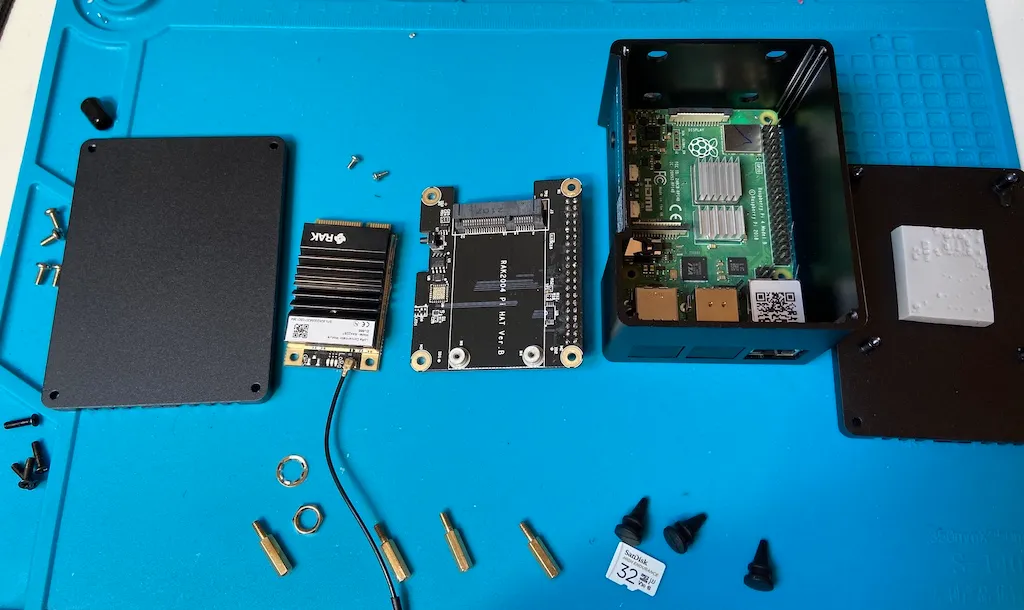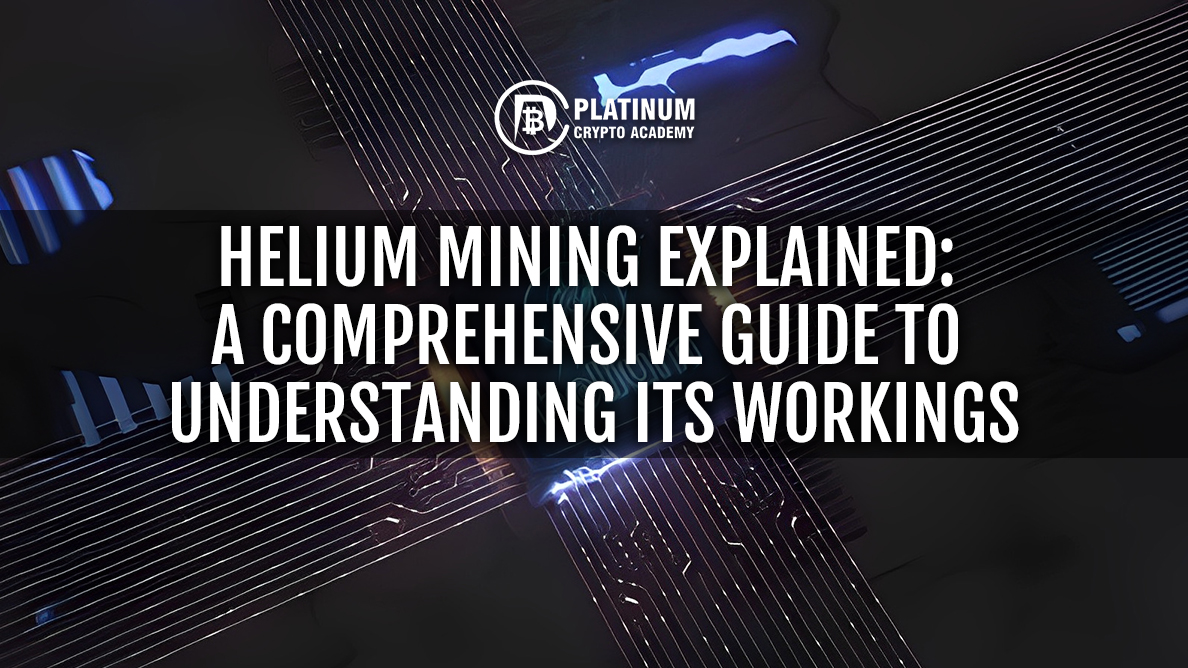Mining serves to validate the authenticity of transactions executed through a blockchain network, such as the Bitcoin blockchain. Miners engage in this process by employing hardware like central processing units (CPUs) or application-specific integrated circuits (ASICs). Alternatively, they may utilize smartphones running on Android or iOS systems to mine various cryptocurrencies.
However, while theoretically feasible, mining cryptocurrencies on smartphones is typically impractical and ineffective. Instead, an innovative approach emerges concerning mining and network infrastructure via a decentralized wireless network. Surprisingly, miners can now engage in cryptocurrency mining without relying on costly infrastructure. This groundbreaking development comes courtesy of the Helium Network, which permits nodes to function as hotspot devices.
This article delves into the Helium ecosystem, elucidating Helium mining, the HNT hotspot miner, and the operational mechanics of a Helium miner.
What exactly is the Helium network?
Helium represents a distributed network comprising hotspots, offering a LoRaWAN-compatible service to Internet of Things (IoT) devices, allowing global citizens access to long-range wireless connectivity. LoRaWAN, short for Long Range Wide Area Network, permits IoT devices to communicate with one another through the open LoRaWAN protocol. These IoT devices, essentially intelligent gadgets, connect to a network to exchange data, providing a broader scope of connectivity compared to WiFi.
The Helium blockchain was specifically designed to foster the development of genuine, decentralized wireless networks. Initially, Helium utilized HNT (Helium) tokens as its primary cryptocurrency. However, in April 2023, the project transitioned to the Solana blockchain. This strategic move ensured native compatibility of HNT with projects within the Solana ecosystem, thus amplifying the utility of other Helium tokens like MOBILE and IOT.
MOBILE tokens serve to streamline the establishment and operation of decentralized wireless networks, particularly focusing on 5G and cellular services. By incentivizing the creation and maintenance of mobile data transmission infrastructure, MOBILE tokens facilitate decentralized cellular access.
On the other hand, IOT tokens are instrumental in bolstering the IoT aspect of the Helium network. They play a crucial role in ensuring comprehensive coverage for low-power Internet of Things devices by incentivizing and facilitating the operation of LoRaWAN hotspots and associated services. The integration of IOT tokens significantly enriches the network’s functionality and extends its reach for IoT applications.
Moreover, Solana’s architecture enables faster transaction speeds and greater efficiency, incorporating innovations such as proof-of-history (PoH). This proves particularly advantageous for the real-time requirements of IoT devices and networks.
Hotspots and participation in the network
In the realm of Helium, individuals have the opportunity to own and oversee a wireless IoT network through the utilization of a unique, portable radio router called a hotspot. These hotspots, which are wireless plug-and-play devices, offer connectivity superior to that of WiFi.
Miners utilize hotspots to establish “The People’s Network,” a long-range wireless network that provides coverage for IoT devices with minimal power requirements in exchange for HNT, the native cryptocurrency of the Helium blockchain. The Helium community has authorized third-party manufacturers to market a variety of Helium hotspots.
Proof-of-coverage (PoC) mechanism
The Helium blockchain employs a novel consensus mechanism known as proof-of-coverage (PoC) to validate that hotspots accurately represent their location and the wireless network coverage they provide from it. Radio waves are utilized in the mining process, with hotspots rewarded for serving as witnesses for peers’ performance, completing PoC challenges, and sharing device data. The Helium Network Explorer serves as a valuable tool for accessing data associated with PoC.
Upon its inception in 2019, the Helium network introduced a Proof-of-Coverage (PoC) system characterized by a sophisticated model involving Challenger, Beaconer, Witness, Validator, and Rewarder roles. This intricate model aimed to meticulously verify the geographical locations of hotspots and the corresponding wireless coverage they provided. However, as the network underwent rapid expansion and diversification, attempts to exploit the system’s complexity and sophistication increased, necessitating adjustments to uphold integrity and effectiveness.
In response, Helium Improvement Proposal 70 introduced an oracle-based PoC system to streamline operations. In this updated system, hotspots are tasked with their own beacon transmissions, while a decentralized group of oracles validates PoC events. This modification reduces network overhead and enhances scalability and efficiency.
Advantages of the Helium Network
The Helium Network offers several advantages over traditional internet service providers (ISPs), including enhanced security, complete encryption, and affordable universal internet access. Leveraging its decentralized architecture, Helium utilizes shared infrastructure provided by hotspots operated by both businesses and consumers, resulting in more cost-effective connection solutions, particularly for IoT devices. This approach can increase internet accessibility for individuals residing in rural or underserved areas.
Moreover, users are relieved of charges typically associated with cellular providers, such as coverage fees or the expenses related to additional hardware like SIM cards. Instead, users only pay for the data consumed by their devices on a pay-per-use basis, utilizing the Helium Console to initiate connectivity on the Helium Network.
Helium supports advanced technologies like LoRaWAN for low-power devices, positioning it as an ideal platform for various IoT applications, ranging from smart agriculture to urban planning. Additionally, Helium empowers its users to contribute to the network’s expansion by incentivizing hotspot hosts with HNT rewards. This community-driven approach fosters a collaborative ecosystem.
What constitutes a Helium miner?
Helium miners contribute to the Helium network’s wireless coverage through the use of specialized hardware devices called hotspots. To become a miner on the Helium network, users must acquire or assemble a WHIP-compliant hotspot and stake a token deposit corresponding to the density of other miners operating in their vicinity. WHIP, which stands for Wireless Hardware Interface Protocol, is the protocol governing the interaction between hotspots and the network.
In addition to the blockchain protocol, the Helium network employs the Helium Wireless protocol, also known as WHIP. Unlike traditional networks with a single coordinator, WHIP enables a network of independent providers to facilitate bi-directional data transfer between wireless devices and the internet.
The validation of hotspots to ensure the accurate delivery of device data and the compensation of miners for their services is managed by internet applications known as routers, or Helium Network servers. These routers purchase encrypted device data from miners, guaranteeing the integrity and precision of data transmission within the network.
Hotspots within the Helium network come in three types:
- Full hotspots: These hotspots maintain a complete copy of the HNT blockchain and receive rewards for all participation activities, including proof-of-coverage challenges and data transfers.
- Light hotspots: Utilizing Light Hotspot software, these hotspots participate as full hotspots by employing validators without the added expense of maintaining a local copy of the blockchain. They also earn rewards for proof-of-coverage challenges and data transfers.
- Data-only hotspots: These hotspots solely facilitate data transfers within the network and do not engage in proof-of-coverage challenges. Consequently, they receive rewards solely for data transfer activities.
Helium mining diverges from traditional methods involving CPUs or ASICs by leveraging radiowave technology. This approach, combined with blockchain technology, establishes a wireless network that surpasses the reliability of conventional wireless service providers. However, it’s crucial to recognize that reliability can be subjective and contingent on factors such as network density, hotspot distribution, and other variables.
Helium hotspots, also known as miners, extend long-range wireless coverage using specialized devices called LoRaWAN transmitters. So, how does one earn Helium tokens in exchange? Miners accrue HNT by contributing to the expansion of The People’s Network’s coverage with compatible hotspots. The reward amount correlates with the volume of data transferred by a miner—meaning more substantial rewards for those transferring more device data. Additional factors influencing HNT rewards include the number of devices served and a miner’s engagement in PoC challenges.
Furthermore, the network autonomously assigns proof-of-coverage tests to validate the locations of hotspots, known as witnesses. Validators issue directives or “challenges” to hotspots, tasking them with transmitting payloads to nearby hotspots for observation and verification as part of PoC participation. These challenges, also termed “beacons,” result in reduced earnings for HNT hotspot miners without neighboring hotspots, as they can only mine HNT for data transfers and cannot have their beacons verified.
Moreover, each compatible device necessitates data credits (DCs) to transmit data to the internet. DCs are generated by burning HNT to achieve a burn and mint equilibrium (BME), ensuring a balance between the creation of new HNT through mining and the removal of HNT from circulation through the burning process. The BME model employs tokens as a proprietary form of payment, wherein customers seeking a service do not directly pay a counterparty but instead burn tokens.

How to configure a Helium miner?
As outlined in the preceding sections, prerequisites for setting up a Helium miner include a hotspot miner, antenna (along with its placement), cables, smartphone, and router. But what’s the process for identifying the optimal Helium miner? The placement of antennas and one’s geographic location are crucial factors in selecting a suitable Helium miner. The following steps offer guidance on configuring a Helium miner:
Step 1: Download and configure the Helium app
Initiate the setup process by downloading the Helium app, available for both Android and iOS devices, and creating an account. Upon completion, the Helium app will generate a Helium wallet, where users can securely store their data. Additionally, users will be prompted to create a six-digit PIN for added security. The app will provide a 12-word seed phrase to serve as a backup for the Helium wallet.
Step 2: Add a Helium miner
Proceed to add a Helium miner, such as the RAK Hotspot Miner, by locating the plus (+) symbol within the app. Once chosen, the miner must be connected to power, indicated by a small red light confirming its operation. Subsequently, press the button on the device’s rear for Bluetooth pairing, or configure WiFi settings by selecting the appropriate network options within the Helium app.

It’s crucial to select a dependable Helium miner endorsed by the Helium community. Prospective buyers should prioritize hotspots compatible with their region’s frequency and possessing a reputable track record for performance and customer support.
Step 3: Choose the hotspot, validate its location, and install the antenna
At this stage, the selected Hotspot Miner will appear in the list. To proceed, users select “Hotspot.” A prompt to add a hotspot will then be displayed. Users proceed by adding the hotspot, confirming its location, and configuring the antenna.
The initial assertion is complimentary, covered by manufacturers, while subsequent assertions incur a transaction fee in HNT. If users are still in the process of setting a location, they can opt to “Skip.” Alternatively, if ready, they can select “Continue.” The added Hotspot can be monitored and managed within the Hotspots section of the mobile app.
Once the hotspot is added and its location validated, it will commence participation in network activities, including PoC challenges and data transfer, earning HNT based on its performance.
How to enhance your Helium miner setup
Optimizing a Helium miner setup aims to maximize the radio frequency signal coverage of the hotspot. Positioning the antenna at its highest point, preferably outdoors or near a window, minimizes obstructions and enhances line of sight to neighboring hotspots.
Employing a high-gain antenna compatible with the area’s frequency band significantly boosts signal power and coverage. Proper grounding is essential to safeguard the antenna against static damage and lightning strikes.
Regularly updating the hotspot’s firmware to the latest version ensures optimal performance and security. Additionally, considering the density of hotspots in the vicinity is crucial; too close may lead to signal overlap, while too far may impede participation in PoC challenges. Effective management of these variables can greatly enhance the efficiency and earnings of a Helium miner setup.
The Helium Network Future
The Helium network’s future appears bright, especially with its transition to Solana, which promises enhanced support for users through hardware and software wallets, along with seamless integration with various applications within the Solana ecosystem. Despite this migration, the significance of HNT, MOBILE, and IOT tokens remains unchanged within the Helium ecosystem, independent of Solana’s native SOL token.
Despite the advent of 5G technology and the shift to Solana as the primary blockchain layer, the relationship between MOBILE and HNT tokens remains unchanged. Owners of 5G hotspots will continue earning MOBILE tokens, while HNT holders can still stake their tokens.
The IoT and 5G sectors of the Helium network are poised for significant growth, benefiting from the newfound reliability and scalability offered by the updated architecture. Innovations such as the Solana Mobile Stack and Saga Phone are set to revolutionize the mobile experience within the ecosystem, further expanding Helium’s capabilities and outreach.
Hopefully, you have enjoyed today’s article. Thanks for reading! Have a fantastic day! Live from the Platinum Crypto Trading Floor.
Earnings Disclaimer: The information you’ll find in this article is for educational purpose only. We make no promise or guarantee of income or earnings. You have to do some work, use your best judgement and perform due diligence before using the information in this article. Your success is still up to you. Nothing in this article is intended to be professional, legal, financial and/or accounting advice. Always seek competent advice from professionals in these matters. If you break the city or other local laws, we will not be held liable for any damages you incur.


